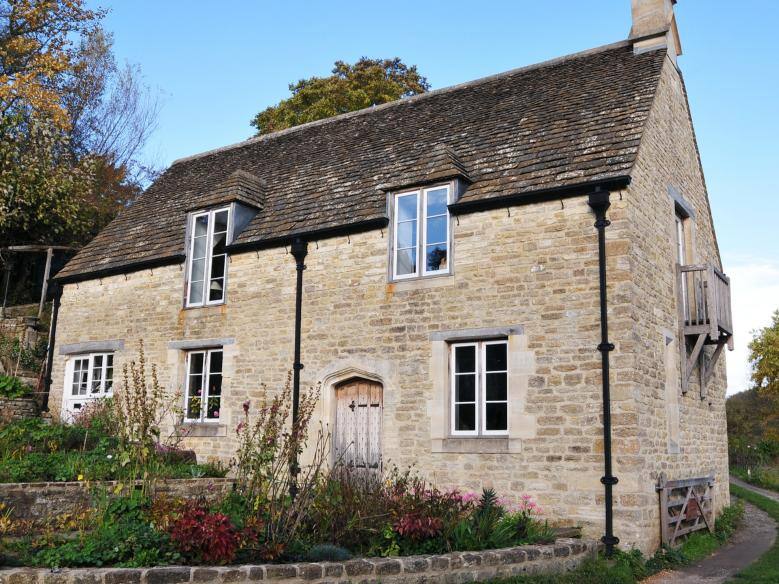
Everyone has a different idea of what an "old house" is. Maybe your home was built in the 1960s, and that qualifies as older in your book. Perhaps you and your family live in a historic house with stone on the exterior! No matter how old your home is, you want to know if you should try to add some insulation.
South Central Services has insulated hundreds of houses in and around Gettysburg, PA. Not only should you insulate your older home, but you can also make it fairly energy-efficient with new insulation.
By the end of this article, you will understand:
- How high-performance insulation can improve old homes
- What to consider before insulating your older home
Don't have time to read right now? Check out everything you need to know at a glance.
Older Homes Are Often Uncomfortable To Live In.
Old homes usually don't have any insulation in the walls. As the age of the home goes down, the likelihood of some insulation increases. However, no matter how much insulation is in an older home, these buildings tend to be drafty and difficult to condition.
An older home with a stone exterior in downtown Chambersburg may freeze you in the winter and bake you in the summer. Navigating a comfortable life in these homes during our more extreme weather seasons can be frustrating.
It isn't easy to stay warm in winter and cool in summer, but it is also expensive. The cost of heating and cooling old homes is significantly higher than that of more recent constructions with more insulation.
Insulation Makes Old Homes More Affordable To Live In.
Adding insulation to an older home makes it much more comfortable and affordable to live in. Less energy is wasted when air leakage is addressed in the attic, basement, or crawl space. Addressing air leaks also means fewer drafts in the winter.
While you may spend a lot on insulating your home, you will likely recoup that investment cost over time through lower energy bills.
You Can Insulate Anywhere In The Thermal Envelope.
If you're actively living in your older home, there are three areas that are likely accessible for new insulation:
Any of these places can receive an airtight seal to eliminate as much air leakage as possible.
If you're amid renovations, you can also insulate your exterior walls.
Things To Keep In Mind When Insulating An Older Home
While we are proponents of insulating older and historic homes, a few cautions come to mind before jumping into an insulation project.
- Address water intrusions first.
- If you don’t, these problems will be exacerbated.
Let’s examine each of these cautions in more detail.
1. The Exterior Of Your Home Should Already Be Weather-Resistant.
Some older homes in our area of Pennsylvania have wood-clad siding or stone exteriors. In both of these cases, the house can have water intrusions.
When it comes to wood-clad siding, the exterior is often still exposed to the elements. The siding is usually not weather-resistant or weather-proof. If any moisture, rain, or vapor can pass through the siding into your living space, it is not time to insulate.
Stone exteriors are another example of potential water intrusion. Water can find its way inside your home. You must take care of any type of water intrusion from the outside prior to insulating.

2. High-Performance Insulation Will Reveal Other Issues That Need Dealt With.
What happens if you don't address weather-resistance concerns before insulating? Putting something high-performance into your home will inevitably exacerbate these issues that should have been dealt with beforehand.
Let's return to the example of the wood-clad siding. Depending on how you might insulate from in the interior of the home, if the wood-clad siding isn't weather-resistant, moisture will frequently get behind the siding. What does high-performance insulation do in this situation? If the wood-clad siding is in direct contact with the insulation, It holds the moisture against the wood for an extended period of time.
Before the insulation was there, water could dry out when it got behind the siding. Now, drying out isn't an option. Some symptoms of this issue include peeling paint and wood rot.
Insulation cannot be expected to solve problems it was not designed to solve. Be sure to address any water leakage before adding insulation to your older home.
The Bottom Line About Old Homes And Proper Insulation
Not only is it possible to insulate an old home, but it is a wise financial investment. High-performance insulation will lower your energy costs and make your home more comfortable year-round. You can put insulation anywhere in your thermal envelope, including the attic, basement, crawl space, and exterior walls.
Before insulating, be sure to address any water intrusion. These intrusions could include groundwater in your basement, or water infiltration through your siding. If these exterior issues are not addressed first, your insulation investment will make the water infiltration problem quite obvious.
Now that you understand why you should insulate your old home, your next step is to:
- Estimate the cost of spray foam insulation for your home
- Compare spray foam and blown-in insulation for your attic
- Learn why homeowners trust South Central Services for their insulation
Disclaimer: While we strive to publish information accurate to building science, local building codes and standards supersede our recommendations.
Kilian has co-owned and operated South Central Services for 8 years. He is passionate about community involvement. In his spare time, he enjoys being with his family, playing ice hockey, and going fishing with friends.
Topics:


